While Disney was courting the attention of theme park fans around the world last Thursday, leaders and visionaries from the themed entertainment and visitor attractions industries were congregating on the other side of the Atlantic for the 2019 edition of BlooloopLIVE.
I was invited along – and impressed by how the event has scaled up since I last attended in 2015. Peppered with insights from key figures, it was the ideal way to take stock of where the industry is at and where it's headed.
Speakers throughout the day included Joe Pine – co-author of industry handbook The Experience Economy – and leaders from Bompas and Parr, PwC, Guinness Storehouse and KidZania.
PY Gerbeau, who has recently taken on the role of CEO for the in-development London Resort, caught the attention of the room early in the day with the announcement of new information and artwork for the project. (Robert covered this earlier this week, so I won't repeat here.)
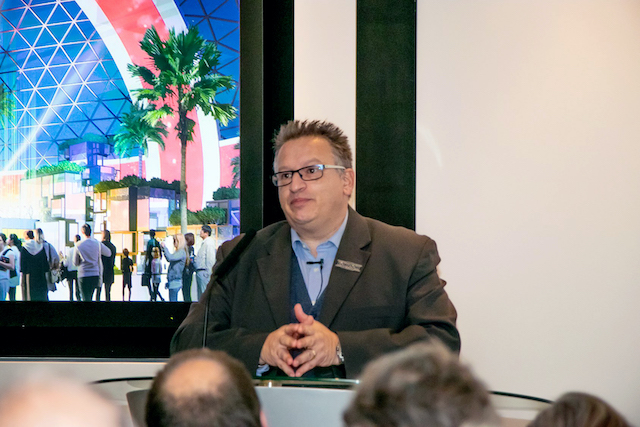
The creative details ticked many of the usual theme park boxes, with land settings including jungles, woodlands and spaceports – and no mention of which IPs will be drawn from the libraries of Paramount, BBC and ITV mentioned just yet. But Gerbeau notably announced the ambition to be the sustainable major theme park in the world, with a Net Zero emissions goal.
Establishing a theme that would be picked up by many of the day's speakers, Gerbeau noted “we need to consider that the customers of today will not be the customers of 2024... We need to create a park that can evolve and adapt easily.”
Sharon Redrobe of Twycross Zoo took that idea and ran with it, discussing the evolution of the conversation around conservation in visitor attractions. She talked frankly about the effect of Blackfish on the fortunes of SeaWorld, stressing the need for animal-based attractions to better engage with their audience – and society at large – about the importance of their work. “If we're not thought leaders, then we should be shut.”
Many of the speakers throughout the day talked about how environmental threats, such as the global climate emergency, stand to affect business models in the future. But in dealing with species under threat of extinction on a daily basis, Redrobe is tackling the consequences right now. “In the 1950s and 60s, [zoos] should have been banned,” she stated – but in response to the challenges faced in the present, “if we didn't have zoos now, we'd invent them.”
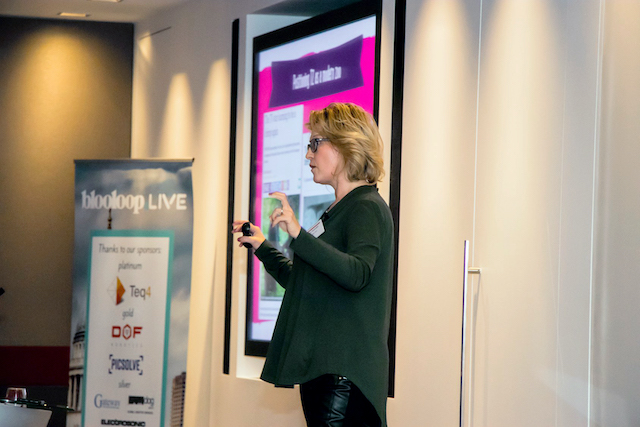
Adapting to the perspectives and priorities of a changing audience was at the heart of Museum of London CEO Sharon Ament's presentation, laying out the vision for the future of the museum as it moves to a new building and takes that opportunity to refocus itself. Ament made a strong case for keeping a finger on the pulse of changing social patterns and trends – just as theme parks do.
“We came up with a very simple concept, and it rules us to this day... we ask ourselves this very simple question: how do we be more like London?” Speaking of the challenges that this poses as well as the opportunities, her team asked themselves: “you've got to tell the hard stories as well as the nice stories... How do we tell those stories?”
Raising a topic that would be explored further later in the day, she talked of the absolute necessity of engaging the audience right from planning stages, setting themselves a target to engage 100,000 people in developing ideas for the new site and exhibits before opening.
In a roundabout way, I was reminded of Margaret Kerrison's remarks at the IAAPA Galaxy's Edge panel last month, who outlined her goal for the audience experience there as: “I want to be seen. You know I want to know that I'm coming in here, and that you see me, and not only that you see me – you see me as someone unique and special.”
Regardless of the motivations that might lead a designer to that goal, there's undoubtedly a shift toward that kind of engagement in how experiences are designed across the industry.
Fiona Eastwood, MD for Midway Attractions at Merlin Entertainments, echoed the sentiment of tapping into the internal lives of customers: “we're dealing with emotions... at its heart, this is about happiness, it's about togetherness, it's about memories.”

She outlined her three keys to success – “guest obsession, be unmissable, and operational excellence” – and shared examples of how staff from across her team had gone above and beyond to create connections with visitors. In particular, a child's lost toy rabbit going on an overnight adventure across Merlin's attractions before being returned to its grateful owner (fully documented on social media, of course) demonstrated the difference a personal approach can make.
For the theme park fans in the audience however, the highlight was undoubtedly the final panel: Sarah Gibbon (VP, Executive Producer at Universal Creative), Vince Kadlubek (CEO Meow Wolf) and Joe Rohde (Senior VP at Walt Disney Imagineering). Each shared their vastly different routes to where they've got to in their careers and reflected on what's been at the heart of their companies creating world-class work.
Gibbon offered thoughts about successfully working with a multitude of partners and leveraging the strengths of a company – but equally served as a hype act for most anticipated future addition to the theme park industry, Universal's Epic Universe. “The vision: to create an entirely new level of experience that forever changes theme park entertainment.” (No small task, as she dryly noted.)
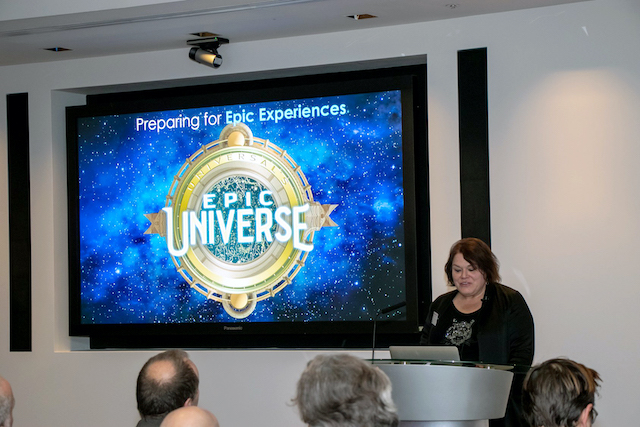
She didn't provide any new details but offered some perspective on how Universal is approaching using the stack of world-class IP that will sit at the heart of the park's offering. “We're going to take guests on a journey where beloved stories expand in vibrant lands, and where that journey is as much a part of the adventure as the ultimate destination. Start with something we know, but from there expand into a new adventure. Give them a chance to have their own adventure.”
Discussing the creative process of Meow Wolf, Kadlubek's artist collective might work at a smaller scale of production, but with no less ambition. Paying homage throughout to the influence theme parks have been on his vision for the company, he told a story of using half of their first serious start-up capital to take his whole team on a trip to California to experience what he called “the most influential piece of multi-narrative art,” Disneyland's Pirates of the Caribbean.
Again, tying the objectives of the experience industry to something more far-reaching, he ended his talk by outlining “the promise of art, and the promise of our industry: that the world can be different from what it is.”
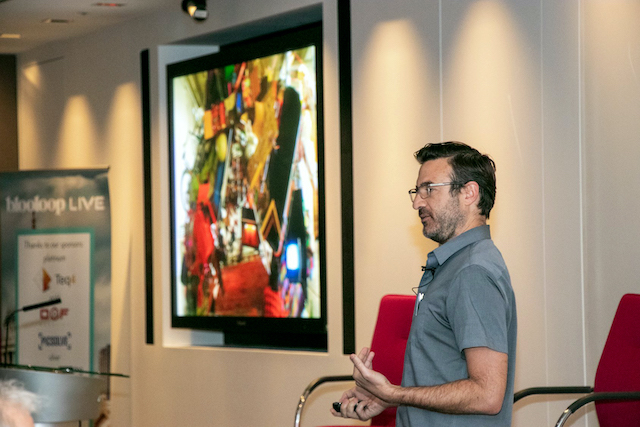
KADLUBEK PHOTO
As Gibbon looked to the future, Rohde offered a “brief history” of the past in the last talk of the day. His talk was typically full of insight into both the artistic and managerial process from someone who has been there since the early days of Epcot:
“At the time when I started at The Walt Disney Company, there was no industry. There would be no ability to assemble a room like this full of people. They simply did not exist. Even those original gentlemen were not theme park designers; they were art directors, automobile designers, they were artists who were brought together to do this. So there was no such thing as an industry from which to hire people. There was no such thing as an industry.”

It feels like an injustice to pick out just a few quotes from a talk packed with ideas. But there was an overriding theme of connecting to the real-life communities that properties are built in or about, bringing the people of those communities into the development process – and the positive and vital consequences of that on the art form.
On Animal Kingdom, for instance: “When you start by saying Disney wants to do a park with live animals, the immediate response from the people [outside Disney] who manage live animals is not 'that sounds great!' That's not what they say. So there's a tremendous amount of adaptation and negotiation that this team then has to do to even enter the realm of possibility. It changes the nature of ideation. It changes the nature of inter-relationship between people, when you add these new people to the group.
“And we end up with something that none of us could have expected – to make almost every aspect of the park go sideways from our initial expectation. It goes sideways from the expectation of the Disney company and becomes something that none of us could have predicted in its final form, through the nature of this collaboration... mainly there's this mixing of people that causes a different chemistry in the make-up of their behaviour.”
And going on to look at the development of the Aulani resort in Hawaii: “I can promise you that the indigenous Hawaiians of Hawaii have zero interest in another 15-storey beachfront hotel. And yet the hotel is deriving its entire legitimacy from the premise that it is authentic Hawaiian, which none of us can say. That can only be said by an indigenous Hawaiian – who at the outset of the project is utterly disinterested, if not openly antipathetic, to the premise of a 15-storey beachfront hotel.”
But through making indigenous Hawaiians the central storytellers – their ideas feeding into every element of the design of the resort – it became the project that Rohde (who himself grew up on the island) is most proud of in his career. He offered these insights not just as an anecdote, but as a call to action for those in the room: “There is value in returning to one of the essential properties of the beginning of the industry – which is radical mixes of people – who are unlike and not necessarily friendly with each other, to remix at the beginning, to force adaptive change.”
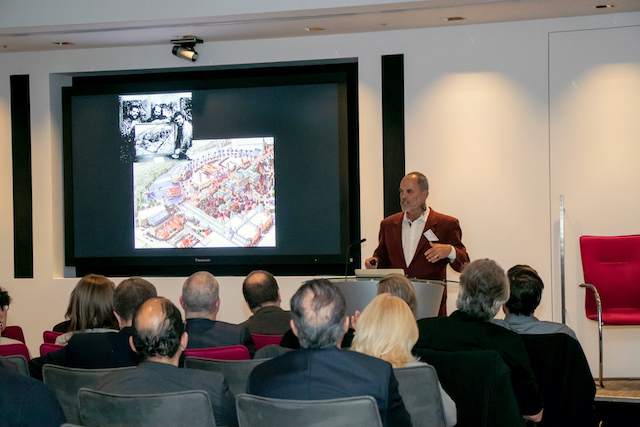
He also offered an intervention into the conversation around the use of IP. “The competitive edge that large organisations have comes from scale. Scale costs money. Scale takes time. Scale involves a lot of people. And the hedge against all that scale and time is the use of intellectual property. So the 'bigness' [of companies like Disney and Universal] and the rise of the use of IP – those things are linked. IP is not really a design choice as much as an investment choice. It is a way of making sure that the money is protected.
“Because if IP was a driving design exercise – every time you use it, it would work. It doesn't work every time you use it. It is a starter.”
Lastly, I'm just going to share an excerpt about the development of the phenomenal Shaman of Songs animatronic in Na'vi River Journey – a perfect example of why Disney remains at the top of the game:
“Robotics over the course of this project went from technical-performative to emotional-performative capability. So the Shaman figure, when we started it, was a very elaborate animated figure that was going to be programmed to do what we wanted it to do and do those things.
“But over the course of developing and rehearsing it, we observed behaviour in the robot that exceeded our own expectation of our design. So we went back into the script for the robot and actually wrote an interior monologue for the robot that did not match the performance script of the words spoken, and then re-animated the facial features into this much more nuanced [performance], like – she's saying this, but she's thinking this. She's looking there, but she's thinking this.
“So on one hand you've got all this technical stuff happening that allows us to do autonomous moving interactive robots. But what people are really looking for in all of this is still some very primal, very simple things like sheer emotional content. Physical contact. A kind of intimacy. A kind of sincerity and honesty of emotion. A kind of sense of the thing that's happening to them is a thing of value that they can take away, and the desire to play.”
TweetYes, you are nitpicking. The SW movies do LOOK LIKE THAT -- grungy and worn. Everything in GE looks like SW, screams SW. That`s not realism, that`s the look of Star Wars.
GE’s goal was to be immersive and as true to Star Wars as possible. It was meant to appeal to a Star Wars fans. Maybe that realness might turn some casual park goers away, but I don’t think that’s true for the big picture.
This article has been archived and is no longer accepting comments.
The catch word nowadays seems to be 'total immersion'. But I think a more important concept is 'escapism'. Escape from the every day world, that's what Disney has always done best. Then Harry Potter came and upped the immersion ante. But the world of Harry Potter is still familiar because it's based on London and the original movies.
About Galaxy's Edge, the new ride looks awesome and the Millennium Falcon ride is ok as a D ticket. But about the land itself, I would argue that while it's very immersive, it's too realistic. It has real world grunge and mold. Docking Bay 7 restaurant has bright yellow stains on the windows that look like vomit or urine. The marketplace looks like a third world country. Some young people that I went with said that it looks like a 'poor place', so they didn't want to spend time there.
I think the right balance of realistic detail is Indiana Jones. It doesn't overdo the grunge. Also IMO GE has too much detail. I look at some of the stuff hanging in the stores and while some of it is interesting, like in Dok Ondar's, some of it looks unnecessary and overdone.
Even some of the exterior detail seems overdone, I look at some of the electrical panels and such and think 'does each building have it's own power plant or something?' In the queue for MFSR, I look at the ceiling and there are like 30-40 cables running along the ceiling, where maybe 10 would have been sufficient. I'm thinking 'they spent a billion on this?' When they cut the third ride and characters and entertainment?
Maybe I'm nitpicking, but IMO GE doesn't fit with the rest of Disneyland. Disneyland feels like fantasy or at least an idealized version of the real world (Main Street). GE is immersive, but it doesn't feel like a fantasy place.
When I was young and went to Disneyland, I always felt it was like an escape from the real world. GE is not a real world, but it has a real world feel with all the detail, grunge and mold. So I hope that going forward, Imagineers will find a better balance between immersion, escapism and fantasy.